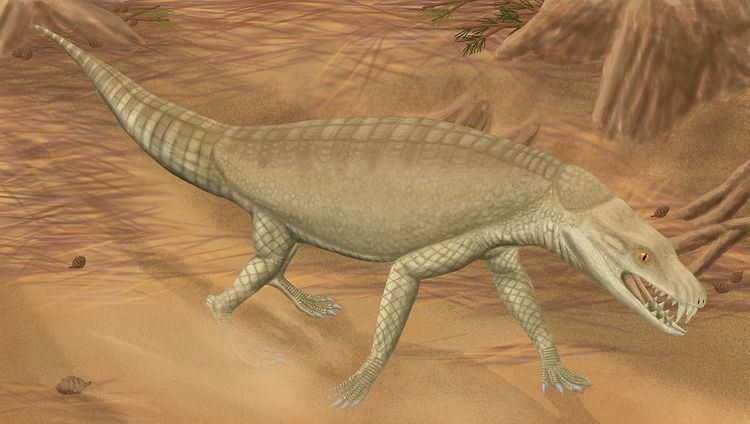 | ||
The Adamantina Formation is a geological formation in Brazil whose strata date back to the Late Cretaceous. Dinosaur remains are among the fossils that have been recovered from the formation. According to most studies, the Adamantina Formation dates from the Turonian to the Santonian stage (90-83.5 million years ago) of the late Cretaceous, although some studies found much younger age - Campanian to Maastrichtian (83.5-66 million years ago) of the late Cretaceous.
Contents
Geological setting
During the Early Jurassic, the supercontinent Pangea started to drift apart due to the breakup of Gondwana and Laurasia. The breakup of Gondwana caused the formation of the large Parana Basin. This basin has a size of ~1,100,000km2 and can be found not only in Brazil but also in Paraguay, Uruguay, and Argentina. The separation of the supercontinent and the breakup of Brazil and Africa was accompanied by volcanism that caused large eruptions of flood basalts. These volcanic rocks formed the Serra Geral Formation which underlies the deposits of the Bauru Group. The Bauru Basin is a trough that, as Miall (1990) argues, evolved due to “thermo-mechanical subsidence” during the Late Cretaceous, probably due to the breakup of Africa and India. The sediments reach a thickness of up to ~300 m and consist mainly of siliciclastic sediments. The Bauru Group can be subdivided into five different formations from bottom to top: Caiua, Santo Anastacio, Adamantina, and Uberaba. Not all formations are equally well represented in the different states and differences occur according their sedimentary composition and therefore also in their naming.
Ornithodirans
Indeterminate dinosaur remains are known from the formation.
